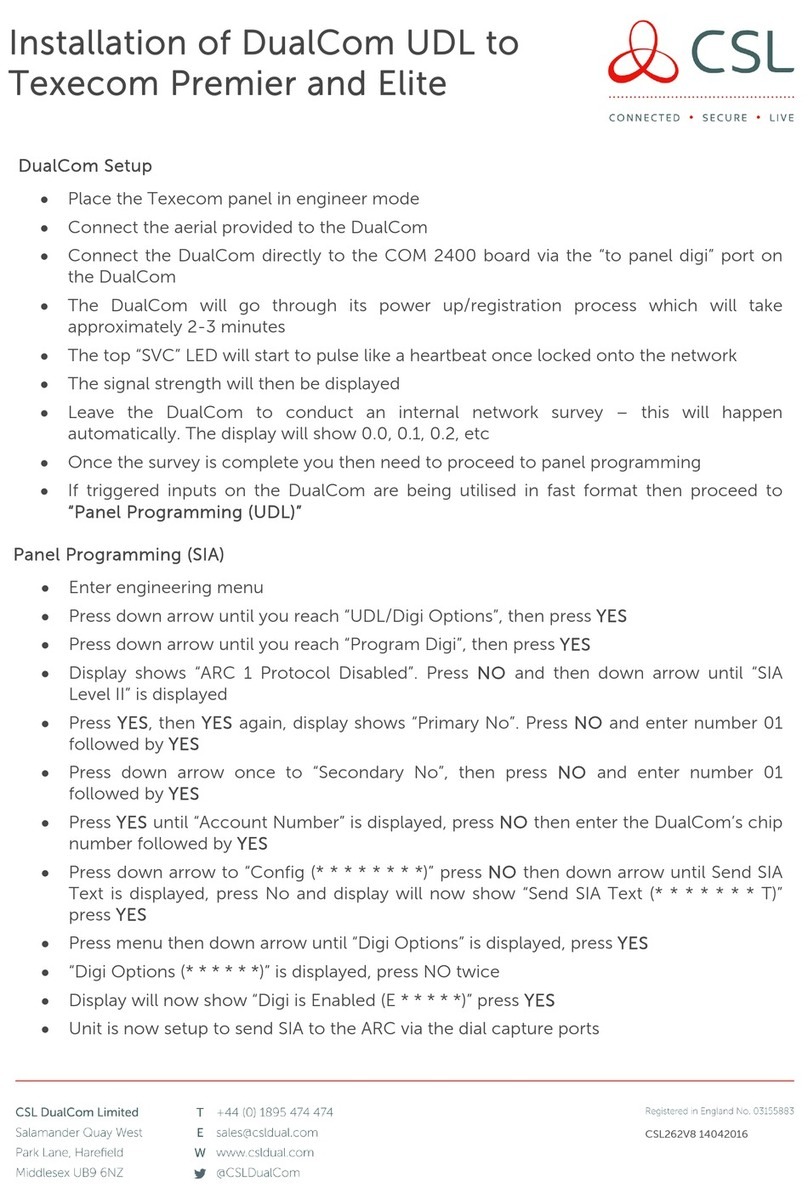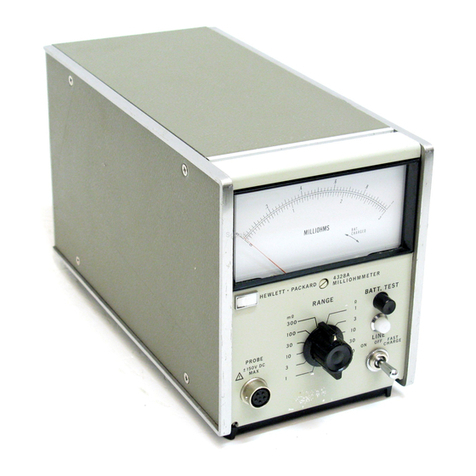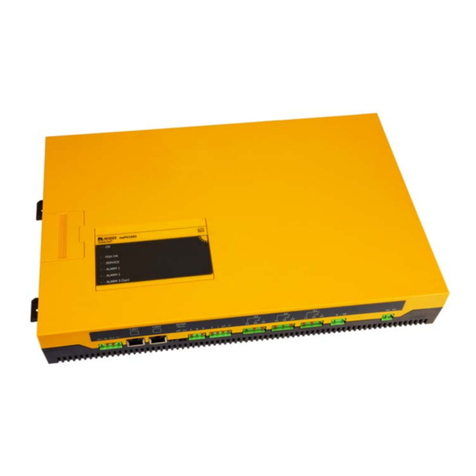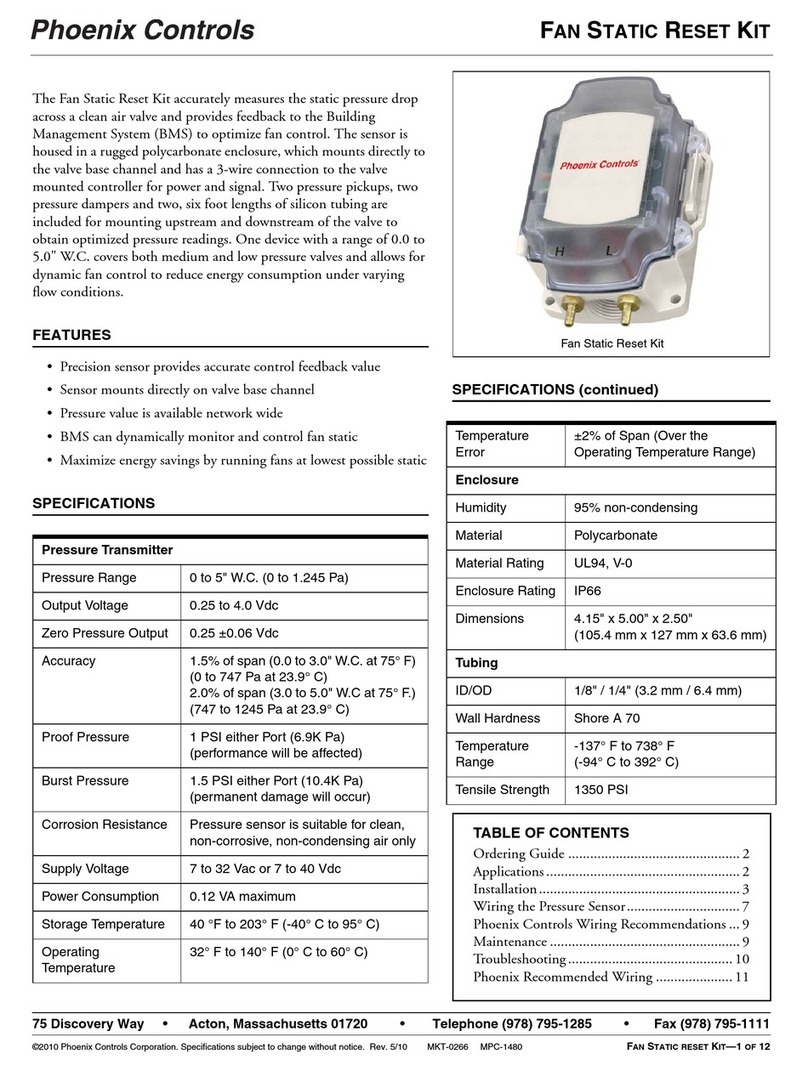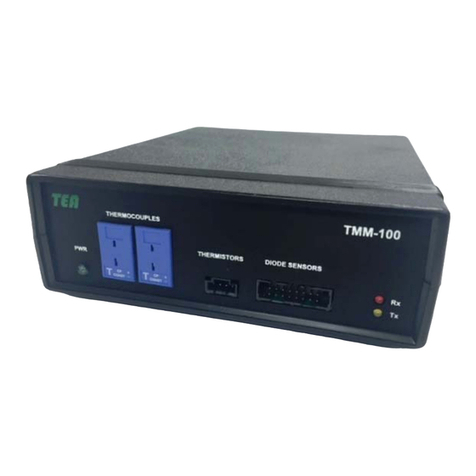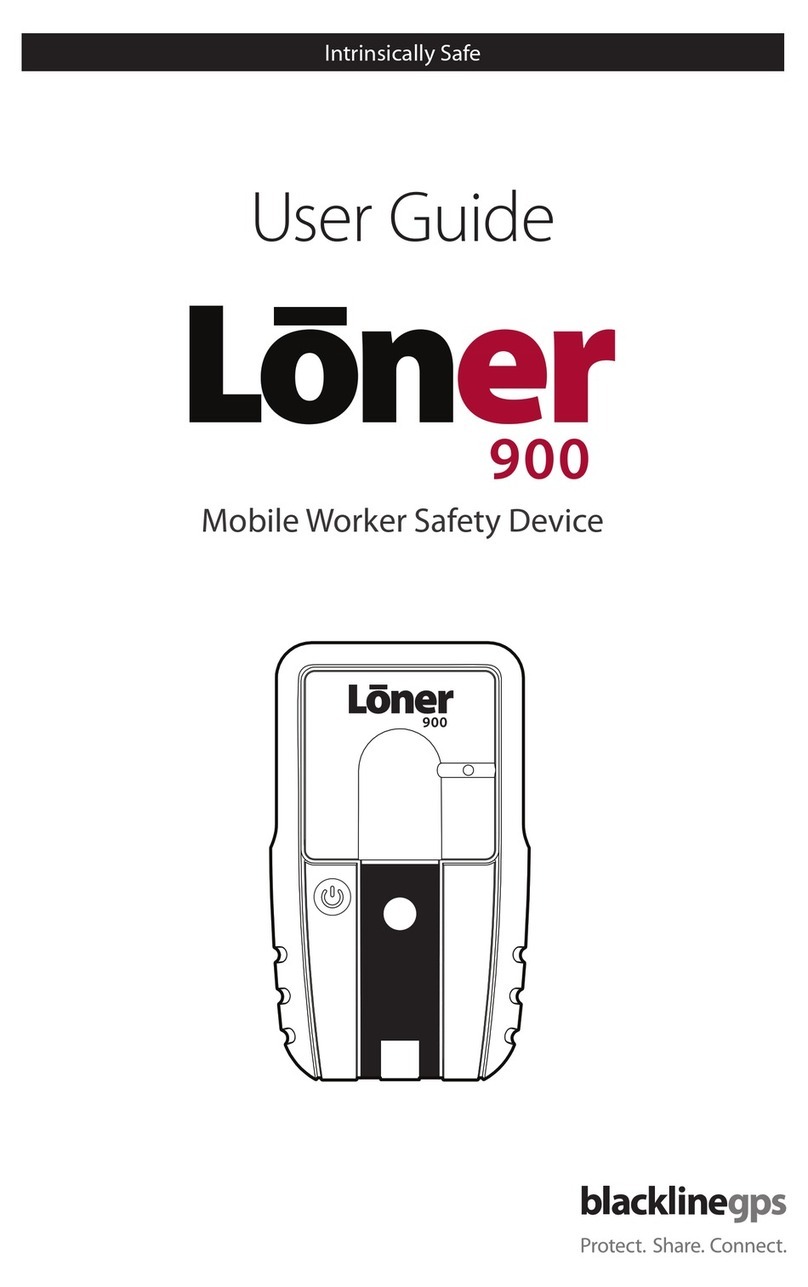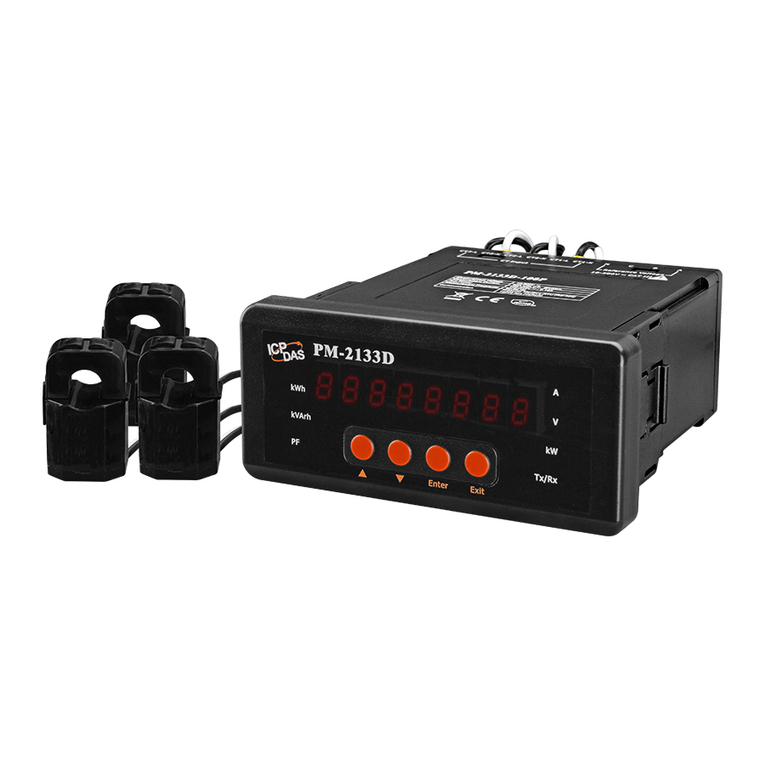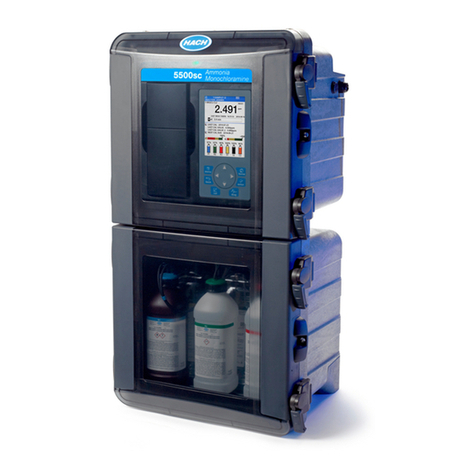CSL CS2369 User manual

QUICK GUIDE &
INSTRUCTION MANUAL
Signal Analyser

At CSL we give you the right tools for
maximum support and minimum hassle.
It’s service that’s built around you.
csl-group.com/installer
INSTALLING
CONFIDENCE
24/7 HELP DESK LIVE CHAT TRAINING VIDEOS COVERAGE MAPS APPS
CSL10709_PSI_Back_Cover_Ad_AW.indd 1 28/08/2018 10:12

FAQS
Do I need to use a SIM?
A SIM is not needed for surveys. It is only required when using Monitor Mode. The SIM used must be at least
the same RAT (i.e. 2G/3G/4G) that you are looking to monitor, however it does not need to be on the same
network. (The SIM card inserted will be able to pick up all available networks and will not be restricted to the
network of the SIM).
Can I use my own SIM?
Yes, any SIM can be used as long as the pin code function has been removed. If you wish to use a micro or
nano SIM, the SIM carrier provided must be used to make it the required size and ensure it fits into the device
correctly.
I am running a survey but want to cancel?
While a survey is running you cannot cancel or complete any other actions, you must wait for the survey to
complete or power o the device.
What is the dierence between Battery Saver and Auto Turn O?
Battery Saver puts the radio module into sleep mode and dims the brightness of the screen to save battery
power. Auto Turn O enables you to select a time, that if the unit is not in use, it will automatically power o to
conserve battery power (as standard this is set to 5 minutes).
Why can’t I see all the networks? (in Single Network or Monitor Mode)
If you can’t see your preferred network try refreshing the network. After this refresh the networks available in
your location will be displayed, if you still can’t see your chosen network it may be that it is not available in that
area.
What do the icons mean?
If you are unsure what the function of an icon is you can use the Help Text function to display a description
(press and hold the icon for 3 seconds).
My device appears to be performing slower than it used to. What is the cause?
If your Signal Analyser is close to reaching the maximum number of saved files (240) it takes longer to process
tasks. By deleting old saved files you will reduce the amount of storage. Details can be found under the
‘DELETING SAVED FILES’ section in this guide. To view the storage space, go to:
Settings > Device Information (it will be shown within the storage space bar).
3

Figure 1 - Signal Analyser Diagram
4
Insert Micro USB Insert SIM
Twist to fit

This section provides basic information to enable you to set up your Signal Analyser quickly.
AERIAL
1. Connect the aerial on top of the device
POWERING UP YOUR DEVICE
1. Make sure the battery is fully charged using the Micro USB port on the bottom of the device
(this typically takes 2 hours). The device will not operate correctly for surveys or monitoring while a
USB is connected.
2. Once power is connected the device will turn on
The first ever power up may take 2-3 minutes as the unit will be doing a background network
search to establish the available networks in your location
FITTING A SIM
A SIM is only required when using Monitor Mode and not when performing single or multiple network surveys
1. Ensure your device is powered down and insert the SIM into the SIM slot on the bottom right hand
side of your Signal Analyser. To remove the SIM, use a pen to depress before detaching. When a SIM
is inserted a SIM Icon will be displayed in the top left hand corner of the screen
If you wish to use a Micro/Nano SIM you will need to use the SIM carrier supplied
2. Place the SIM inside the carrier and push this into the SIM slot on the bottom right hand side of your
Signal Analyser. To release use a pen to depress the SIM carrier and then detach
HELP TEXT
1. Press and hold (for 3 seconds) the icon you would like explaining. A pop up box will then show with
the description
2. To close the pop up box press the X in the top right hand corner
QUICK GUIDE
5
HELP MESSAGE
Perform a cellular survey on all
available networks.
Figure 2 - Help Text

6
PERFORMING A SITE SURVEY
MULTI NETWORK SURVEY
1. Select the Cellular icon on the home screen
2. Select the Multi Network icon
3. Choose either 2G, 3G, 4G or all technologies (for the 2G variant the technology will be limited to
2G only)
4. Select the Start icon for the survey to begin. If you wish to name the survey before you start
select the Name Survey icon , name your survey and press Go
GO
5. A Survey Progress bar will then display the status of your survey. The survey should take
2-3 minutes
6. Once the survey has been completed the results will be available
SINGLE NETWORK SURVEY
1. Select the Cellular icon on the home screen
2. Now select Single Network icon
3. Choose either 2G, 3G, 4G or all technologies (for the 2G variant the technology will be limited to 2G
only)
4. Select the required network (if you can’t see your preferred network press refresh so that the unit
locates all available networks in the area). You can also select Any Network option which allows the
radio module to decide which is best for your location.
Refreshing networks may take 2-3 minutes
5. Select the Start icon for the survey to begin. If you wish to name the survey before you start
select the Name Survey Icon , name your survey and press Go
GO
6. A survey progess bar will then display showing the progress of the survey. The survey should take
2-3 minutes
7. Once the survey has been completed the results will be available

7
ADVANCED CELL PROPERTIES
PARAMETER DESCRIPTION TECHNOLOGY
Network The network to which the cell belongs 2G, 3G, 4G
Type The radio technology 2G, 3G, 4G
Cell Number The cell number you are investigating 2G, 3G, 4G
ARFCN The cell carrier assigned radio channel (BCCH - Broadcast
Control Channel) 2G
BSIC Base Station Identification Code 2G
RSSI (RxLev) Reception Level (in dBm) 2G, 3G, 4G
BER Bit Error Rate (in %) 2G
MCC Mobile Country Code 2G, 3G, 4G
MNC Mobile Network Code 2G, 3G, 4G
LAC Location Area Code 2G, 3G
CELLID Cell Identifier 2G, 3G
Cell Status
Cell status; Outputs [suitable, low priority based on the received
system information, forbidden, barred based on the received
system information, low level, unknown]
2G, 3G, 4G
NUMARFCN Number of valid channels in the Cell Channel Description 2G
ARFCNN ARFCN of a valid channel in the Cell Channel Description 2G
NUM CHANNELS Number of valid channels in the BCCH Allocation list 2G
BAN The ARFCN of a valid channel in the BA list 2G
SCR CODE Scrambling Code 3G
RSCP Received Signal Code Power - RSCP level (in dBm) 3G
ECIO EC/IO ratio level (in dB) 3G
BW Bandwidth (in MHz) 4G
TAC Tracking Area Code 4G
UARFN The cell carrier frequency designated by UTRA Absolute Radio
Frequency Channel 3G
EARFCN Cell carrier frequency designated by EUTRA Absolute Radio
Frequency Channel Number 4G
PHY CELL ID Physical Cell ID 4G
RSRP Reference Signal Received Power 4G
RSRQ Reference Signal Received Quality - RSRQ level (in dBm) 4G
RESULTS
TOP NETWORKS
Shows the highest signal strength readings for each available network in your location; up to 5 networks will
be displayed (if available). Press the right arrow to enter the Best Cells section.
BEST CELLS
Shows the highest signal strength readings across all technologies and networks in your location; up to 5 cells
will be displayed (if available). Press the right arrow to enter the Cell Properties section.
CELL PROPERTIES
Shows basic information for each cell. To view advanced information press the screen in the appropriate area.
See below for more information. If further results are available use the down arrow to view these.

CELL PROPERTIES
04031105.CSV
2G B_1800 62%
RSSI: -75dBm
2G B_900 52%
RSSI: -81dBm
2G B_900 52%
RSSI: -81dBm
2G B_900 34%
RSSI: -92dBm
2G B_900 32%
RSSI: -93dBm
1 EE
ID: 80AB
2 O2 - UK
ID: 5B8C
3 vodafone UK
ID: 285C
4 vodafone UK
ID: 78AB
5 O2 - UK
ID: 6106
TECHNOLOGY
The technology will be displayed either
2G (GSM), 3G (UMTS), 4G (LTE)
SIGNAL STRENGTH (RSSL)
Each base station will give the signal
strength available at the present time.
See ‘RSSL EXPLANATION’ section
RSSI
Received signal strength indicator in
dBm
NETWORK
The mobile operator will be
displayed here
CELL ID
Cell ID number
FREQUENCY BAND
CELL PROPERTIES
04031105.CSV
2G B_1800 62%
RSSI: -75dBm
2G B_900 52%
RSSI: -81dBm
2G B_900 52%
RSSI: -81dBm
2G B_900 34%
RSSI: -92dBm
2G B_900 32%
RSSI: -93dBm
1 EE
ID: 80AB
2 O2 - UK
ID: 5B8C
3 vodafone UK
ID: 285C
4 vodafone UK
ID: 78AB
5 O2 - UK
ID: 6106
NETWORK : EE
TYPE : 2G
CELL NO. : 1
ARCFN : 684
LAC : 2250
MCC : 234
MNC : 30
RSSI : 75
STATUS : 0
RSSL : 62
BSIC : 46
ID : 32939
NUM ARFCN : 0
BER : 00.00
8
Figure 3 - Cell Properties
Figure 4 - Advanced Cell Properties

PERFORMING A SITE SURVEY
WIFI SURVEY
1. Select the Wi-Fi icon on the home screen
2. Select the Start icon for the survey to begin. If you wish to name the survey before you start
select the Name Survey Icon , name your survey, and press Go
GO
3. A survey progress bar will then display, showing the progress of the survey. The survey should take
5-10 seconds
4. Once the survey has been completed the results will be available
RESULTS
TOP SSID
Shows the highest signal strength readings for each available SSID in your location and the number of Access
Points (APs); up to 5 networks will be displayed (if available). Press the right arrow to enter the Best Access
Points section.
BEST ACCESS POINTS
Shows the Best Access Points for your location and the channel number. Press the right arrow to enter the
Access Point section.
ACCESS POINT PROPERTIES
Shows basic information for each SSID. To view advanced information, press the screen in the appropriate area.
See below for more information. If further results are available use the down arrow to view these.
PARAMETER DESCRIPTION
SSID NAME Wi-Fi network name
ENCRYPTION Wi-Fi security protocol
MAC Media Access Control (device identifier)
RSSI Received Signal Strength Indicator (in
dBm)
SIG Signal Strength (%)
FREQ OFFSET Frequency Oset of Access Points
FREQ CALIB Calibration for Frequency Oset
CHN Channel
9

0
-10
-20
-30
-40
-50
-60
-70
-80
-90
-100
-110
-120
..........................................................................
................................................................
..........................................................................
..........................................................................
..........................................................................
..........................................................................
..........................................................................
..........................................................................
..........................................................................
..........................................................................
..........................................................................
..........................................................................
..........................................................................
..........................................................................
EE 3G BAND:2100
RSSI: 91
479
CSQ: 6
ID: 7EFF03
430
10786
11
MONITOR MODE CELLULAR
1. If you are performing Monitor Mode on 4G, ensure a SIM card is inserted as per the ‘FITTING A SIM’
section. The SIM card used must be the technology required or higher e.g. 4G is capable to perform
Monitor Mode for 4G, 3G and 2G. The SIM does not need to be for the same network provider you
wish to monitor
2. Select the Monitor Mode icon
3. Select the Single Network icon
4. Choose either 2G, 3G or 4G or any network (for the 2G variant the technology will be limited to 2G
only)
5. Select the required network (to ensure all available networks are displayed press refresh)
Refreshing networks may take 2-3 minutes
6. Live Monitor Mode will now run
10
NETWORK
RSSI
Received Signal Strength Indicator
in dBtm
CELL ID
Cell ID Number
LAC
Location Area Code
TECHNOLOGY
The technology will be displayed either
2G (GSM), 3G (UMTS), 4G (LTE)
FREQUENCY BAND
MONITOR MODE SNAPSHOT
1. Ensure Monitor Mode is running
2. Press the Snapshot icon
3. The rename survey option will automatically display, name the survey then press Go
GO
to save.
A file will now be created, but can only be viewed in a table format on your laptop/PC (you will not
see a graph)
MONITOR MODE RESULTS CELLULAR
Figure 5 - Monitor Mode

MONITOR MODE WIFI
1. Select the Monitor Mode icon
2. Select the Wi-Fi icon
3. Choose either SSID, Channel, MAC, Connect
SSID
Live Monitor Mode will run on a specific SSID
1. Select the SSID icon SSID
2. Choose the SSID you wish to monitor (to ensure all available SSIDs are displayed press refresh)
3. Live Monitor Mode will now run
CHANNEL
Live Monitor Mode will run on a specific channel
1. Select Channel icon
Channel
2. Choose the channel you wish to monitor
3. Live Monitor Mode will now run a list of Access Points (APs) per channel which will be displayed via a
table. Push any channel with APs present to view the SSIDs and signal strengths (in dBm)
MAC
Live Monitor Mode will run on a specific MAC address
1. Select MAC icon
2. Select the MAC address you wish to monitor
3. Live Monitor Mode will now run
CONNECT
Connect to a specific SSID and run live Monitor Mode
1. Select the connect icon
Connect
and it will constantly signal Google to provide you with ping times in
ms
2. Select the SSID you wish to connect to
3. Enter the password for the SSID you have selected
4. Live Monitor Mode will now run
MONITOR MODE SAVE RESULTS
1. Ensure Monitor Mode is running
2. Press the Save Results icon
3. The Rename Survey option will automatically display, name the survey then press Go
GO
to save.
A file will now be created, but can only be viewed in a table format on your laptop/PC (you will not
see a graph)
11

0
-10
-20
-30
-40
-50
-60
-70
-80
-90
-100
-110
-120
..........................................................................
................................................................
..........................................................................
..........................................................................
..........................................................................
..........................................................................
..........................................................................
..........................................................................
..........................................................................
..........................................................................
..........................................................................
..........................................................................
..........................................................................
..........................................................................
SKY190 Channel: 1
MAC : f0:23:91:P5:TT:0L
APs : 5APs
RSSI : -45dBm
SIG: 100%
Ch#
1
2
3
4
5
6
7
8
9
10
11
12
13
14
15
APS
5
0
0
2
0
3
0
0
0
0
0
0
0
0
5
Figure 6 - Wi-Fi monitor when SSID, MAC and Connect options are selected
Figure 7 - Wi-Fi monitor when the Channel option is selected
CHANNEL
CHANNEL
NETWORK NAME
MAC
Media Access Control (device identifer)
NETWORK NAME
APs
Access Points
RSSI
Received Signal Strength Indicator (in dBm)
SIG
Signal Strength (in %)
12

SAVED FILES
1. Select the Saved Results icon . Results will be shown in descending order by time
2. Then select either the Multi Cellular icon or Wi-Fi . Results will be shown in
descending order by time
3. Select the file you wish to view. Results will now be shown in the same format as per the ‘RESULTS’
section
DELETING SAVED FILES
1. Select and hold the file you wish to delete. A Delete icon
Delete
will now show in the top right hand
corner
2. Press delete. This file has now been deleted
13
SAVED FILE DOWNLOAD
1. Ensure the Signal Analyser is switched on
If the device is switched o and connected to the USB port on a PC/Laptop this will
charge the device only
2. Connect Signal Analyser via a USB lead to your PC/Laptop
3. Once connected click on Start then select Computer. The Signal Analyser files will be shown under
devices with removable storage
4. Select Analyser
5. Select the applicable folder (Cellular Snapshot, Cellular Survey , Wi-Fi Snapshop and Wi-Fi survey)
and your results will be displayed as a CSV file.
6. These files can now be moved to your required folder or displayed as a CSV file.
You cannot read/write files and run a survey while the Signal Analyser is connected to
the USB port, this may cause the unit to crash
ICON DESCRIPTION FUNCTION
Brightness Icon Adjust brightness Increase/decrease
brightness
Languages Icon Change device language Select language
Time Icon Set time/date Set time/date
Auto-O Icon Define how long the device stays powered on
with no action Set auto-o time
Default Survey Icon Define which survey the quick survey button on
the front of the device executes Select survey
Sounder Icon Turn sound on/o Turn sound on/o
Power Save Icon Power saver to send radio module to sleep Turn power save on/o
Device Information
Icon View firmware version
View firmware version,
Radio module, Radio
firmware, IMEI, SIM status
Factory Reset Icon Restore factory defaults Complete a factory reset
back to default settings
SETTINGS
Enter the settings menu

© Copyright CSL GroupCSL960V4 17022020 PD000960-004
Model CS2369 2G/GSM
CS2389 2G/GSM, 3G/UMTS, 4G/LTE
Dimensions 172mm (h) x 72mm (w) x 20mm (d)
Weight 149g including aerial
Temperature -20°C to + 60°C transit, -4°C to +40°C operating
Humidity 0-80% non-condensing
Warranty 2 years
Radio Technology GSM, UMTS, LTE, Wi-Fi 2.4Ghz (depending on version)
Battery 3.7 Volt 1000mAh
Charger 5 Vdc micro USB plug-top charger or equivalent
RSSL EXPLANATION
To ensure that a consistent approach is used to all Radio Access Technologies (RAT) - such as 2G, 3G
and 4G - a new, more accurate method for calculating percentage of the signal strength has been
introduced. The RSSL is not based on CSQ readings alone provided by the radio module, but is calculated
from the raw data received from the network readings. The value is mapped through the whole range
and is consistent across each RAT. The value calculation includes both signal strength and signal quality
measurements.
The example of such mapping for a 3G cell is:
RSCP: -80 dBm
RSRQ: -4 dB
CSQ: 19
ECIO: 12
PART NUMBER CS2369 CS2379 CS2389 CS2389-NA CS2389-AU
4G Bands (MHz)
800 (B20)
900 (B8)
1800 (B3)
2100 (B1)
2600 (B7)
700 (B12/B13)
850 (B5)
1700 AWS (B4)
1900 (B2)
700 (B28)
1800 (B3)
2600 (B7)
3G Bands (MHz) 900 (B8)
2100 (B2)
900 (B8)
2100 (B2)
850 (B5)
1900 (B2)
2G Bands (MHz)
850 (B5)
900 (B8)
1800 (B3)
1900 (B2)
900 (B8)
1800 (B3)
900 (B8)
1800 (B3)
Wi-Fi 2.4Ghz 2.4Ghz
FREQUENCY BAND
SPECIFICATIONS
SUPPORT
For more information on the Signal Analyser or other CSL products please contact
CSL Technical Support:
UK Tel: +44 (0)1895 474 444
Ireland Tel: 1800 855 695
Hours: 08.30 to 18.00 weekdays, 10.00 to 16.00 Saturday
Visit www.csl-group.com for the latest copies of all manuals.
CERTIFICATIONS
International Radio Approval
The CS2369/CS2379/CS2389 Signal Analyser incorporates an independently tested and approved
4G/3G/2G radio module that meets the requirements of European radio communication standards
Approval Authority: CE1909
This manual suits for next models
4
Table of contents
Other CSL Measuring Instrument manuals
Popular Measuring Instrument manuals by other brands
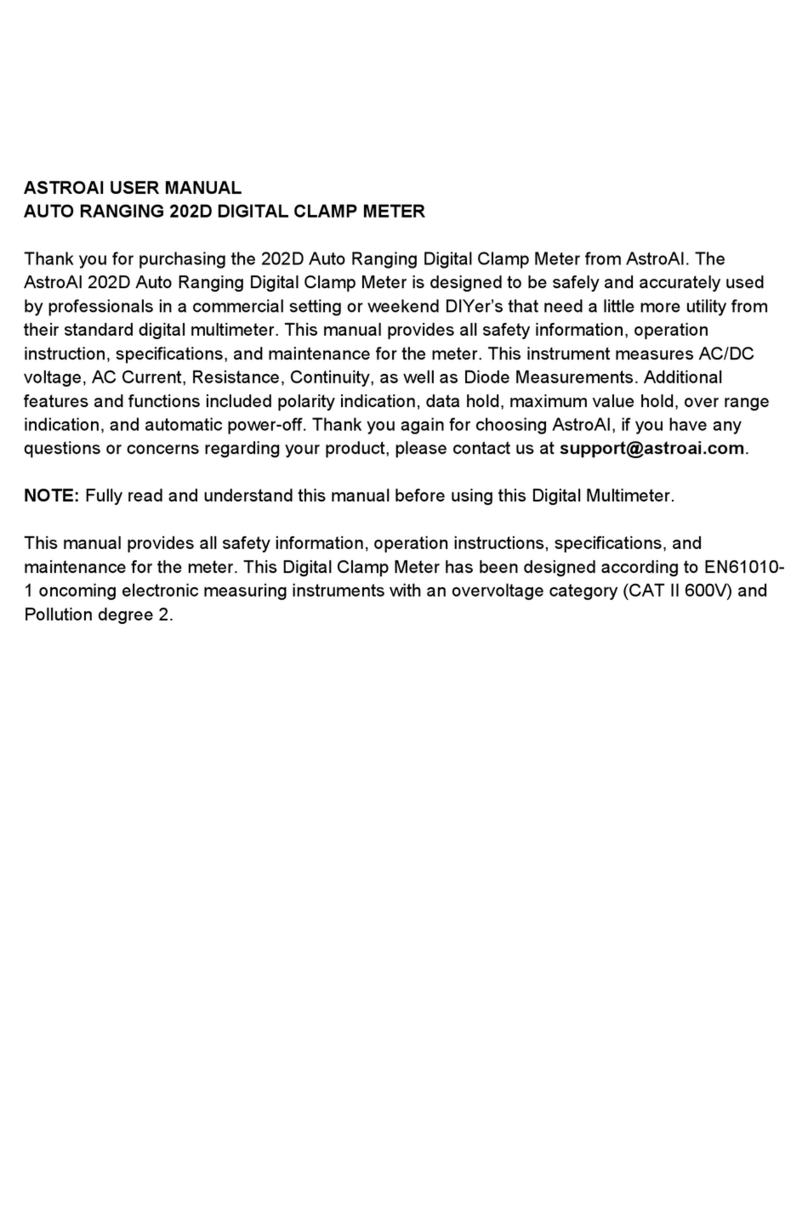
AstroAI
AstroAI 202D user manual
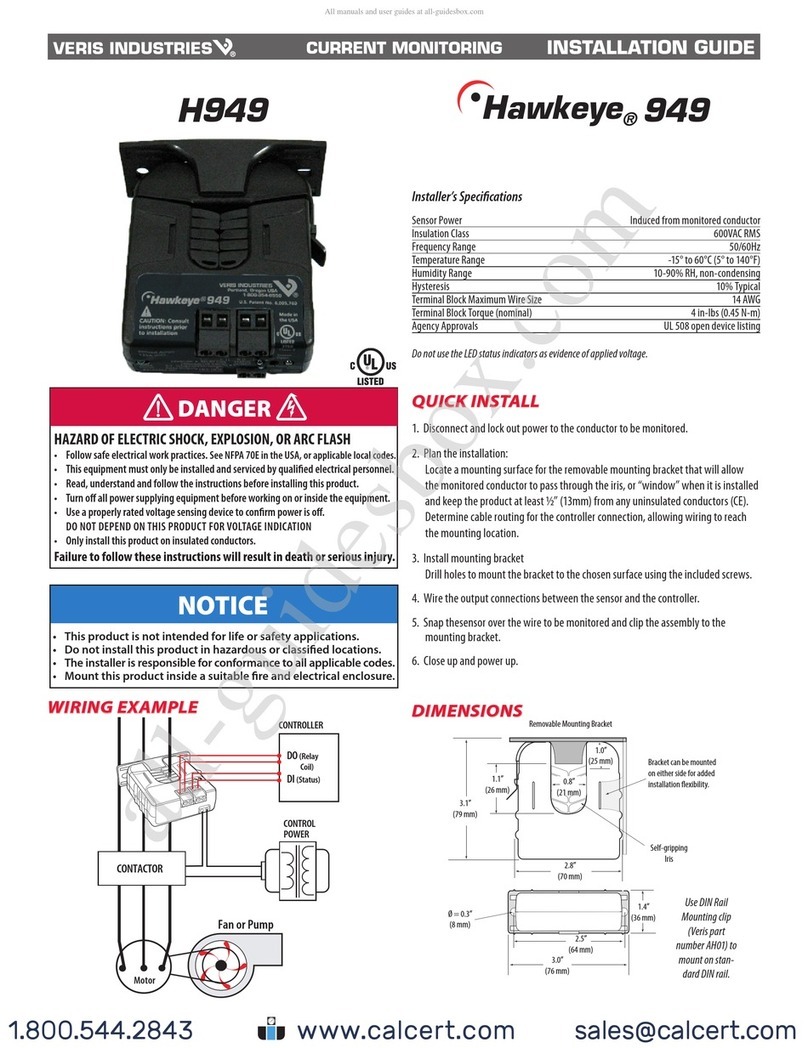
Veris Industries
Veris Industries Hawkeye H949 installation guide
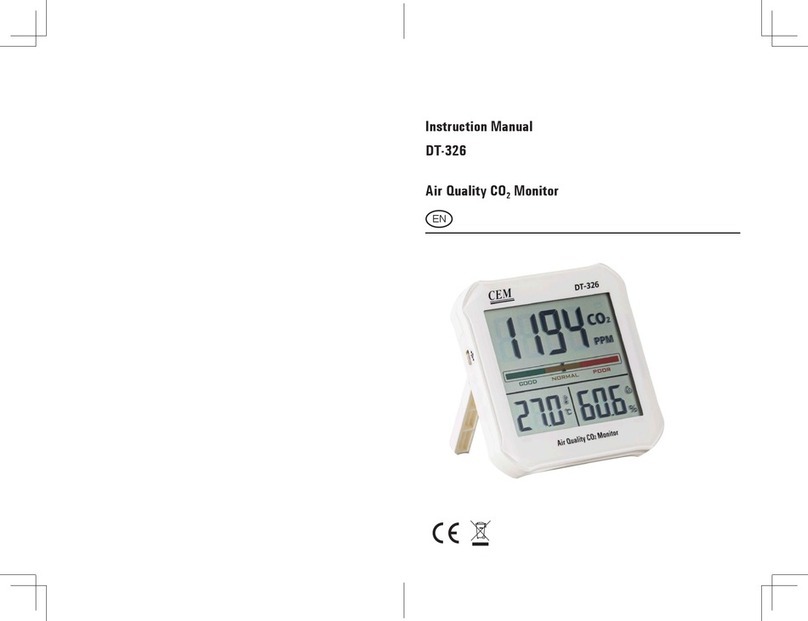
CEM
CEM DT-326 instruction manual
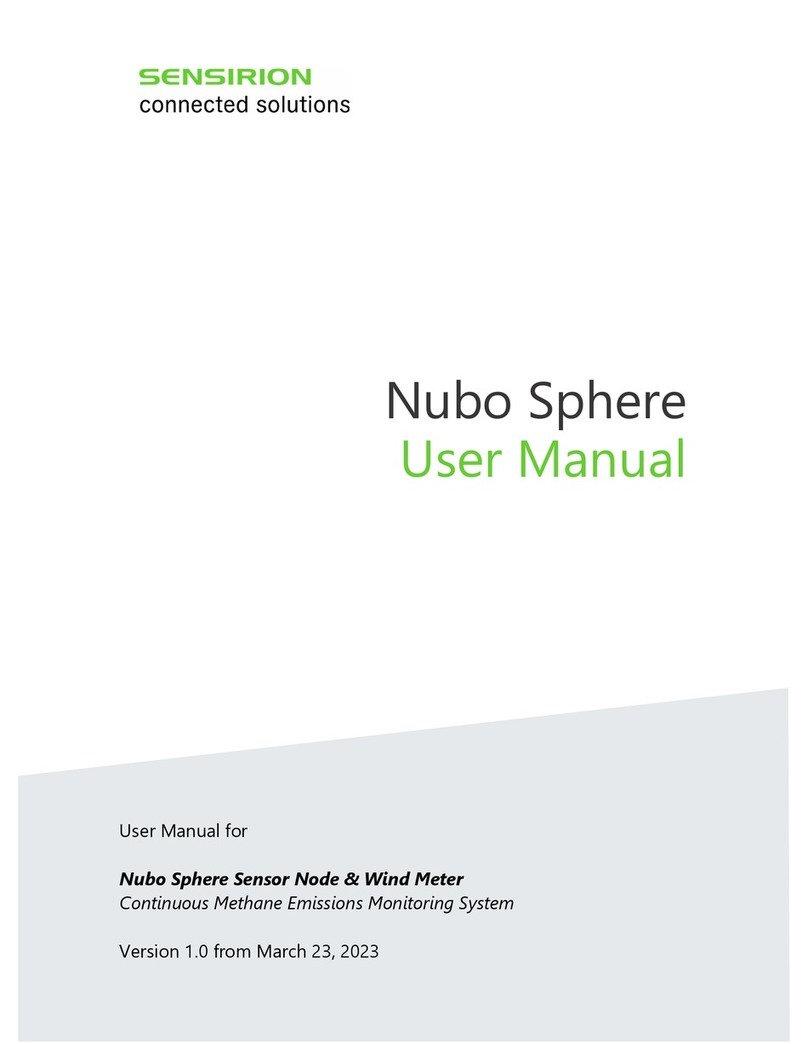
SENSIRION
SENSIRION Nubo Sphere user manual

Aquametro Oil & Marine
Aquametro Oil & Marine CONTOIL VZF II DN 15 Spare Parts - Repair - Maintenance
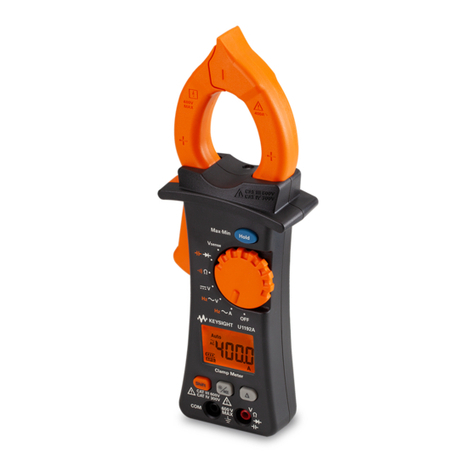
Keysight
Keysight U1190A Series quick start guide
